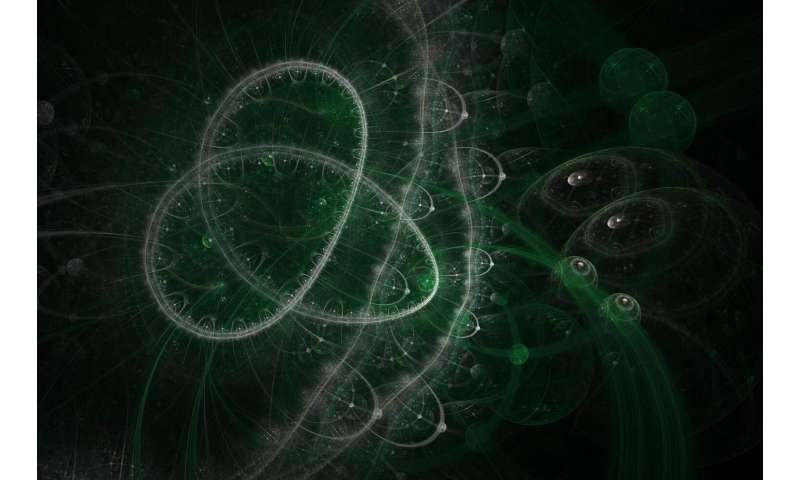
Credit: CC0 Public Domain
Theoretical physicists from Trinity College Dublin have found a deep link between one of the most striking features of quantum mechanics—quantum entanglement—and thermalisation, which is the process in which something comes into thermal equilibrium with its surroundings.
Their results are published today [Friday 31st January 2020] in the prestigious journal Physical Review Letters.
We are all familiar with thermalisation—just think how your coffee reaches room temperature over time. Quantum entanglement on the other hand is a different story.
Yet work performed by Marlon Brenes, Ph.D. Candidate, and Professor John Goold from Trinity, in collaboration with Silvia Pappalardi and Professor Alessandro Silva at SISSA in Italy, shows how the two are inextricably linked.
Explaining the importance of the discovery, Professor Goold, leader of Trinity's QuSys group, explains:
"Quantum entanglement is a counterintuitive feature of quantum mechanics, which allows particles that have interacted with each other at some point in time to become correlated in a way which is not possible classically. Measurements on one particle affect the outcomes of measurements of the other— even if they are light years apart. Einstein called this effect 'spooky action at a distance'."
"It turns out that entanglement is not just spooky but actually ubiquitous and in fact what is even more amazing is that we live in an age where technology is starting to exploit this feature to perform feats which were thought to be impossible just a number of years go. These quantum technologies are being developed rapidly in the private sector with companies such as Google and IBM leading the race."
But what has all this got to do with cold coffee?
Professor Goold elaborates: "When you prepare a cup of coffee and leave it for a while it will cool down until it reaches the temperature of its surroundings. This is thermalisation. In physics we say that the process is irreversible—as we know, our once-warm coffee won't cool down and then magically warm back up. How irreversibility and thermal behaviour emerges in physical systems is something which fascinates me as a scientist as it applies on scales as small as atoms, to cups of coffee, and even to the evolution of the universe itself. In physics, statistical mechanics is the theory which aims at understanding this process from a microscopic perspective. For quantum systems the emergence of thermalisation is notoriously tricky and is a central focus of this current research."
So what's all this got to do with entanglement and what do your results say?
"In statistical mechanics there are various different ways, known as ensembles, in which you can describe how a system thermalizes, all of which are believed to be equivalent when you have a large system (roughly on scales of 10^23 atoms). However, what we show in our work is that not only is entanglement present in the process, but its structure is very different depending on which way you choose to describe your system. So, it gives us a way to test foundational questions in statistical mechanics. The idea is general and can be applied to a range of systems as small as a few atoms and as large as blackholes."
Marlon Brenes, Ph.D. candidate at Trinity and first author of the paper, used super-computers to simulate quantum systems to test the idea.
Brenes, a numerical specialist, said: "The numerical simulations for this project that I performed are at the limit of what can currently be done at the level of high-performance computing. To run the code I used the national facility, ICHEC, and the new Kay machine there. So, as well as being a nice fundamental result the work helped us really push the boundaries of this type of computational approach and establish that our codes and the national architecture are performing at the cutting edge."
More information:
Marlon Brenes et al, Multipartite Entanglement Structure in the Eigenstate Thermalization Hypothesis, Physical Review Letters (2020). DOI: 10.1103/PhysRevLett.124.040605
Citation:
How supercomputers are helping us link quantum entanglement to cold coffee (2020, January 31)
retrieved 31 January 2020
from https://phys.org/news/2020-01-supercomputers-link-quantum-entanglement-cold.html
This document is subject to copyright. Apart from any fair dealing for the purpose of private study or research, no
part may be reproduced without the written permission. The content is provided for information purposes only.
#Physics | https://sciencespies.com/physics/how-supercomputers-are-helping-us-link-quantum-entanglement-to-cold-coffee/
No comments:
Post a Comment